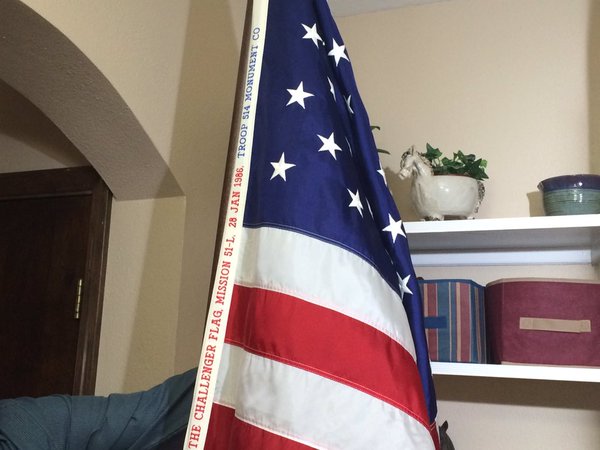KUSA - It's handled with utmost care, 30 years after the Challenger explosion.
"It was a big deal," said Mike Hite, a former Scoutmaster of Boy Scout Troop 514 in Monument.
As keeper of the "Challenger Flag," he leaves nothing to chance -- but chance is what makes up the fabric of this special flag.
"The story of this flag is so intricate, it's so involved," he said. "It almost takes a life of its own."
Back in the mid-1980s, Troop 514's Scoutmaster was a former Air Force major, with NASA connections. He arranged to get the flag onto a shuttle not once, but twice. Both missions, though, were scrubbed.
"The Challenger was actually the third flight – and the boys were getting pretty tired of the process," Hite said.
Finally, though, it was assigned to STS 51-L: Challenger. After several delays, the shuttle launched on Jan. 28, 1986 -- much to the excitement of the Boy Scouts watching back in Colorado. And then, the shuttle exploded.
"Like every other elementary student in the world, they were watching and of course, when they saw the disaster. They were heartbroken," Hite said. "Totally heartbroken."
NASA believed the flag had been destroyed. Several months later, Navy divers working to recover Challenger's wreckage located the crew locker at the bottom of the Atlantic Ocean. Inside was the Challenger flag, still in the bag it had been placed in.
"It was pretty much intact," Hite said.
The flag returned to the Boy Scouts of Troop 514 in Monument, where it's been ever since. The Boy Scout troop uses the flag in ceremonies around Colorado and the country. They say their goal is to keep the flag accessible to everyone and remind people of the Challenger story. Hite said it holds a special meaning for all of them.
"I see a symbol that represents our nation and it has endured so much and has been through so much," he said. "I think that flag represents what we all can be, what we can all stand for and represent."
It's a symbol of what's possible, 30 years after Challenger.
(© 2016 KUSA)


